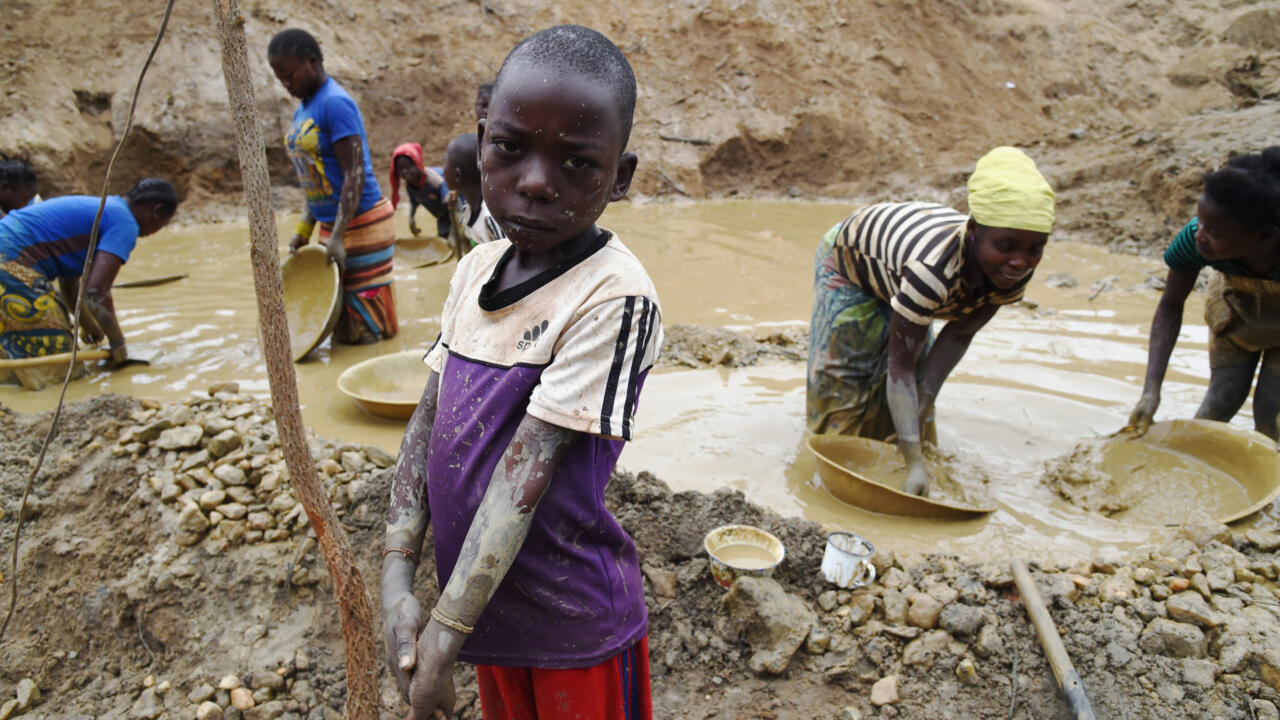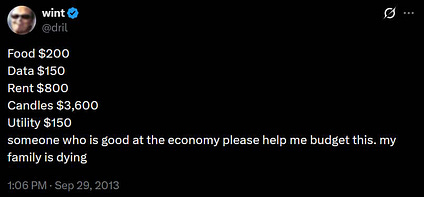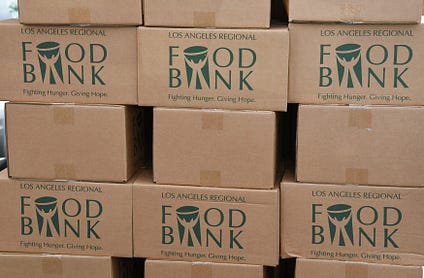Washington state low-income energy aid continues despite federal shutdown – KUOW

Report on Federal Funding Disruptions to Energy Assistance and Sustainable Development Goals
Introduction: Energy Affordability and SDG 1 (No Poverty)
- A U.S. government shutdown has suspended federal funding for the Low Income Home Energy Assistance Program (LIHEAP), a critical initiative for achieving Sustainable Development Goal 1 (No Poverty).
- LIHEAP provides essential financial support to approximately 6 million low-income families, helping them manage heating bills and energy expenses.
- The disruption of this aid directly threatens the financial stability of vulnerable households, pushing them closer to poverty by forcing a choice between heating and other basic necessities.
National Implications for SDG 3 (Good Health) and SDG 10 (Reduced Inequalities)
- The funding lapse exacerbates challenges related to SDG 3 (Good Health and Well-being), as inadequate heating can lead to severe health issues, particularly in cold weather.
- It also widens the gap targeted by SDG 10 (Reduced Inequalities), as low-income families disproportionately bear the burden of rising energy costs and federal service interruptions.
- Several states, including New York, Maine, Minnesota, Pennsylvania, and Wyoming, have reported disruptions to their assistance programs.
- Nationally, one in six households (approximately 21 million) is behind on energy bills, highlighting a widespread affordability crisis that the LIHEAP suspension intensifies.
Case Study: Washington State’s Mitigation Strategies and Alignment with SDG 7 (Affordable Energy)
- In contrast to the national trend, Washington state has demonstrated resilience through proactive financial planning, aligning with the principles of SDG 7 (Affordable and Clean Energy).
- The Washington Department of Commerce is utilizing $36 million in federal funding left over from the previous year to continue services.
- This reserve is projected to sustain assistance for approximately 90,000 households through late January or early February.
- Local partner agencies, such as Byrd-Barr Place in Seattle, report they are providing services in full force but are observing a significant increase in applications, driven by rising living costs and anxiety over the federal shutdown.
Innovative Funding and Progress Towards SDG 13 (Climate Action)
- Washington state has developed a supplementary program, the State Home Energy Assistance Program, which directly links social support with SDG 13 (Climate Action).
- This state-level initiative is funded by revenue from Washington’s auctions of carbon permits to major polluters.
- By using funds generated from its carbon market, the state creates a sustainable funding stream for energy assistance that is independent of federal appropriations, demonstrating a model for a just transition where climate policy directly supports vulnerable communities.
Conclusion: Upholding SDG 11 (Sustainable Communities) through Resilient Social Safety Nets
- The federal shutdown underscores the vulnerability of social safety nets that are essential for building sustainable and inclusive communities as outlined in SDG 11.
- Stable and reliable funding for energy assistance is paramount to ensuring that all residents have access to basic services, a cornerstone of community resilience.
- Washington state’s approach, combining prudent fiscal management with innovative, climate-linked funding mechanisms, offers a powerful model for ensuring energy security and advancing multiple Sustainable Development Goals simultaneously.
1. Which SDGs are addressed or connected to the issues highlighted in the article?
-
SDG 1: No Poverty
The article directly addresses poverty by focusing on the Low Income Home Energy Assistance Program (LIHEAP), which is designed to help “low-income families” and households that “earn less than 150% of the federal poverty level.” The disruption of this aid due to a government shutdown directly impacts the financial stability and well-being of the poorest populations, who struggle to afford basic necessities like heating.
-
SDG 7: Affordable and Clean Energy
The core issue is access to affordable energy for heating. The article highlights the program’s role in helping “pay about 6 million low-income families’ heating bills and energy expenses.” It also mentions rising energy costs, with residential electricity increasing by 33% and natural gas by 47%, underscoring the challenge of energy affordability. Furthermore, the program supports making homes “more energy efficient,” which aligns with the clean energy aspect of this goal.
-
SDG 10: Reduced Inequalities
The article discusses a social protection system (LIHEAP) that specifically targets an economically vulnerable group. By providing assistance to low-income households, the program aims to reduce the inequality gap in accessing essential services. The shutdown’s impact disproportionately affects these households, exacerbating existing inequalities.
-
SDG 13: Climate Action
A direct link to climate action is established through the description of Washington state’s own home heating program. This program is “funded by Washington’s auctions of carbon permits to major polluters.” This policy connects climate mitigation efforts (making polluters pay to emit carbon dioxide) with social adaptation and support programs, demonstrating an integrated approach to climate and social policy.
2. What specific targets under those SDGs can be identified based on the article’s content?
-
Target 1.3: Implement nationally appropriate social protection systems and measures for all… and achieve substantial coverage of the poor and the vulnerable.
The article’s entire focus is on LIHEAP, a federal social protection program in the U.S. designed to provide energy assistance. The text explicitly states the program helps “about 6 million low-income families” nationwide and “90,000 Washington households,” demonstrating its role in providing coverage for the poor and vulnerable.
-
Target 7.1: By 2030, ensure universal access to affordable, reliable and modern energy services.
The article deals with the affordability of modern energy services (electricity and natural gas for heating). The program’s purpose is to prevent “utility shutoffs” and help families with “heating bills and energy expenses,” directly contributing to making energy access affordable and reliable for those who might otherwise lose it. The mention of a nationwide problem where “one in six [households] are currently behind on their energy bills” highlights the challenge in achieving this target.
-
Target 10.2: By 2030, empower and promote the social, economic and political inclusion of all, irrespective of… economic or other status.
LIHEAP promotes the social and economic inclusion of people with low economic status by ensuring they can meet a basic need (staying warm in winter). This prevents them from having to choose between heating and other essentials like food, thereby reducing their risk of further marginalization. The article highlights this by noting that rising costs of food and energy are “hitting many household budgets.”
-
Target 13.2: Integrate climate change measures into national policies, strategies and planning.
Washington state’s initiative to fund its State Home Energy Assistance Program through “auctions of carbon permits to major polluters” is a clear example of integrating climate change measures into state-level policy. The state has created a direct link between its carbon pricing mechanism and funding for social programs, showing a strategic integration of climate and energy justice policies.
3. Are there any indicators mentioned or implied in the article that can be used to measure progress towards the identified targets?
-
Indicator for Target 1.3 (Social Protection): Number and proportion of the population covered by social protection systems.
The article provides specific numbers that serve as indicators of program coverage. It states that LIHEAP helps “about 6 million low-income families” nationally and that “about 90,000 Washington households rely on federal assistance.” These figures directly measure the reach of this social protection system.
-
Indicator for Target 7.1 (Affordable Energy): Proportion of households behind on energy bills and trends in energy prices.
The article implies a lack of affordable energy by stating that nationwide, “about 21 million households, or one in six, are currently behind on their energy bills.” It also provides concrete data on rising costs: “The price of residential electricity has increased 33% in the U.S. since 2020… while natural gas has increased 47%.” These statistics are direct indicators of energy affordability challenges.
-
Indicator for Target 10.2 (Reduced Inequalities): Definition of program eligibility based on income relative to poverty levels or median income.
The article specifies the eligibility criteria for assistance, which are indicators of how inequality is being targeted. It mentions that households “earn less than 150% of the federal poverty level” for federal aid and “below 80% of area median income” for state aid. These thresholds are used to measure and address economic disparity.
-
Indicator for Target 13.2 (Climate Action): Implementation of policies that generate revenue from carbon pricing for social or environmental programs.
The article provides a clear indicator of an integrated climate policy by describing how Washington’s State Home Energy Assistance Program is funded. The statement that “The state’s biggest polluters pay to emit carbon dioxide, with the money going to environmental and energy programs” serves as a qualitative indicator that such a policy has been successfully implemented.
4. Table of SDGs, Targets, and Indicators
| SDGs | Targets | Indicators |
|---|---|---|
| SDG 1: No Poverty | 1.3: Implement nationally appropriate social protection systems and measures for all… and achieve substantial coverage of the poor and the vulnerable. | The number of households receiving assistance: “about 6 million low-income families” nationally and “90,000 Washington households.” Eligibility criteria based on the federal poverty level (“less than 150% of the federal poverty level”). |
| SDG 7: Affordable and Clean Energy | 7.1: By 2030, ensure universal access to affordable, reliable and modern energy services. | The proportion of households in energy debt: “21 million households, or one in six, are currently behind on their energy bills.” The increase in energy prices: “residential electricity has increased 33%… natural gas has increased 47%.” |
| SDG 10: Reduced Inequalities | 10.2: By 2030, empower and promote the social, economic and political inclusion of all, irrespective of… economic or other status. | Program eligibility criteria targeting low-income groups: households “below 80% of area median income” qualify for state assistance. |
| SDG 13: Climate Action | 13.2: Integrate climate change measures into national policies, strategies and planning. | The existence of a state policy linking carbon pricing to social programs: The State Home Energy Assistance Program is “funded by Washington’s auctions of carbon permits to major polluters.” |
Source: kuow.org
What is Your Reaction?
 Like
0
Like
0
 Dislike
0
Dislike
0
 Love
0
Love
0
 Funny
0
Funny
0
 Angry
0
Angry
0
 Sad
0
Sad
0
 Wow
0
Wow
0















































/environment-climate-change-and-health-(ech)/water-sanitation-hygiene-and-health-(wsh)/landfill-tuvalu-36092.tmb-1200v.jpg?sfvrsn=5c21fe40_1#)


.jpg.webp?itok=0ZsAnae9#)

























